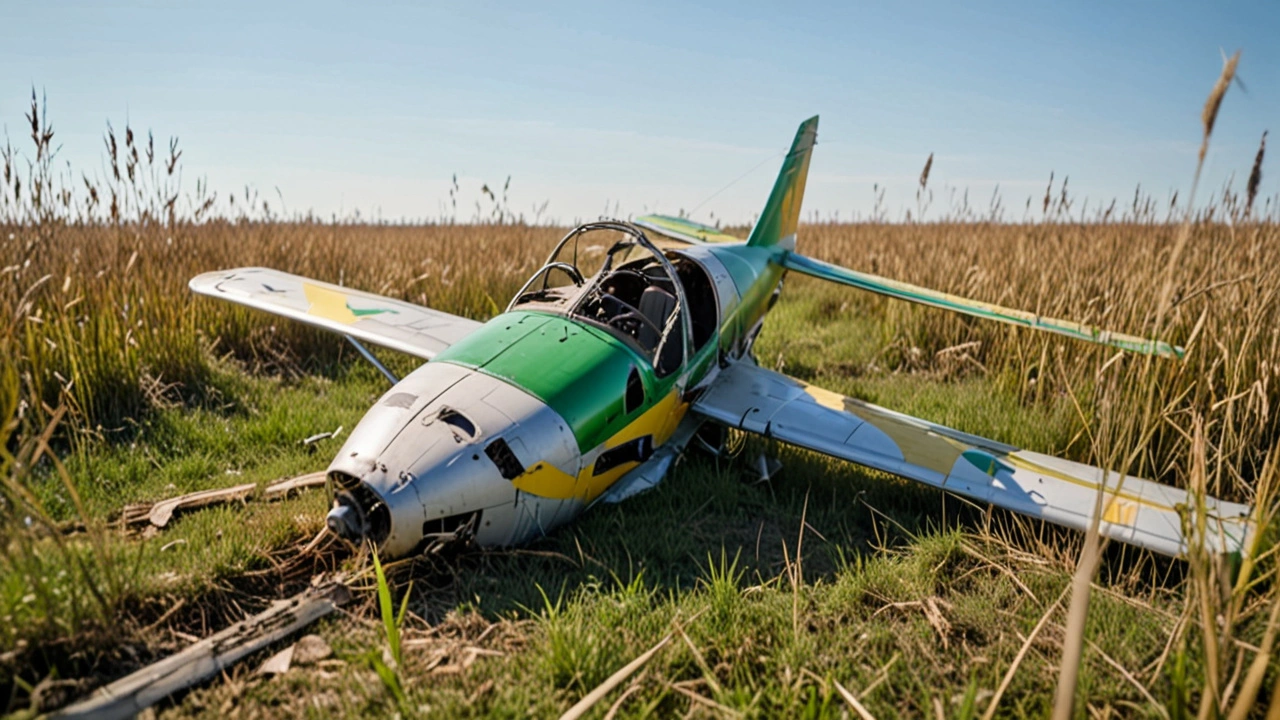Miraculous Survival: Two People Walk Away from Light Aircraft Crash Near Hornsnek, Pretoria
On the morning of July 15, 2024, what could have been a tragic aviation disaster turned into a story of miraculous survival. A three-axis light sport aircraft, a type of small recreational aircraft favored for its agility and ease of control, was involved in a catastrophic engine failure while flying over the picturesque region of Hornsnek, Pretoria. These small aircraft are often used for personal travel, training, and leisure, making the incident a shocking reminder of the risks associated with aviation.
The Incident Unfolds
The day began as any other for the two individuals on board the ill-fated aircraft. The weather was clear, and conditions appeared ideal for a flight. As the aircraft soared over the scenic landscapes of Pretoria, an unexpected mechanical issue changed the course of their journey. Reports indicate that the aircraft experienced a sudden engine failure, leaving the pilot with limited options. Faced with this critical situation, the pilot had to make swift decisions to ensure their survival.
Engine failures in light sport aircraft, though rare, are severe events that demand immediate attention and action. The pilot had to quickly assess the surroundings and plan an emergency landing. Attempting a controlled crash under these circumstances required both skill and calm under pressure. It's a testament to the pilot's training and experience that they managed to navigate the aircraft to a relatively safe crash-landing site near Hornsnek, minimizing potential harm.
Heroic Efforts and Survival
The exact details of the moments leading up to the crash are still under investigation, but what stands out is the resilience and presence of mind demonstrated by both the pilot and the passenger. Miraculously, both individuals survived the crash, which is no small feat given the severity of the situation. Emergency responders were quick to arrive at the crash site, providing much-needed medical attention. Reports suggest that the two individuals were shaken but largely unharmed, a testament to the effectiveness of the emergency protocols followed during the ordeal.
The aircraft itself suffered significant damage, a stark reminder of the intense forces at play during such incidents. However, the cockpit remained relatively intact, providing a protective shell that likely contributed to the occupants' survival. This incident underscores the critical importance of aircraft design and safety features in protecting lives when mechanical failures occur.
A Closer Look at Light Sport Aircraft
Light sport aircraft, also known as LSA, are a category of small, lightweight aircraft designed for recreational use. They are typically used by aviation enthusiasts for personal travel and training. Characterized by their simplicity, these aircraft are easier to operate compared to larger, more complex planes. However, they also come with their own set of challenges and risks. Engine reliability is one of the primary concerns, and incidents like the one in Pretoria highlight the need for rigorous maintenance and thorough pre-flight checks.
The aviation community closely monitors such incidents to glean insights and improve safety measures. Each event serves as a learning opportunity, prompting reviews of existing protocols and the development of new strategies to enhance safety in the skies.
Regulatory and Safety Measures
Aviation authorities place strict regulations on the operation and maintenance of light sport aircraft. These measures are designed to prevent accidents and ensure the highest levels of safety for pilots and passengers. Regular maintenance checks, pilot training programs, and adherence to safety guidelines are crucial components of these safety measures. Organizations such as the Civil Aviation Authority (CAA) conduct thorough investigations following incidents, aiming to identify root causes and prevent future occurrences.
The Pretoria crash will likely prompt a detailed investigation by aviation authorities. This process will involve examining the wreckage, reviewing maintenance records, and interviewing the individuals involved. The findings will be critical in identifying any gaps in existing safety measures and implementing necessary improvements.
The Resilience of the Human Spirit
While the technical aspects of the crash are crucial, the human element of this incident cannot be overlooked. The survival of the two aboard the aircraft is a powerful reminder of the resilience and resourcefulness humans are capable of in the face of life-threatening situations. The quick thinking and composed actions of the pilot played a pivotal role in averting a complete disaster.
The broader Pretoria community has rallied around the survivors, offering support and celebrating their escape from a potentially fatal situation. Such incidents often serve as a unifying force, bringing communities together in a shared sense of relief and gratitude.
Looking Ahead
As the investigation continues, the aviation community will look to understand every aspect of this incident. The ultimate goal is to enhance safety and ensure that the skies remain as safe as possible for all who fly. The resilience displayed by the survivors and the quick response from emergency services highlight the importance of preparedness and training in aviation safety.
This crash near Hornsnek, Pretoria, while alarming, offers valuable lessons for the aviation industry. It underscores the need for ongoing vigilance, continuous improvement in safety protocols, and the unwavering spirit of those who take to the skies. As we await the findings from the investigation, it's clear that this incident, though dramatic, has a silver lining: the heartening survival of two individuals against the odds.










Write a comment